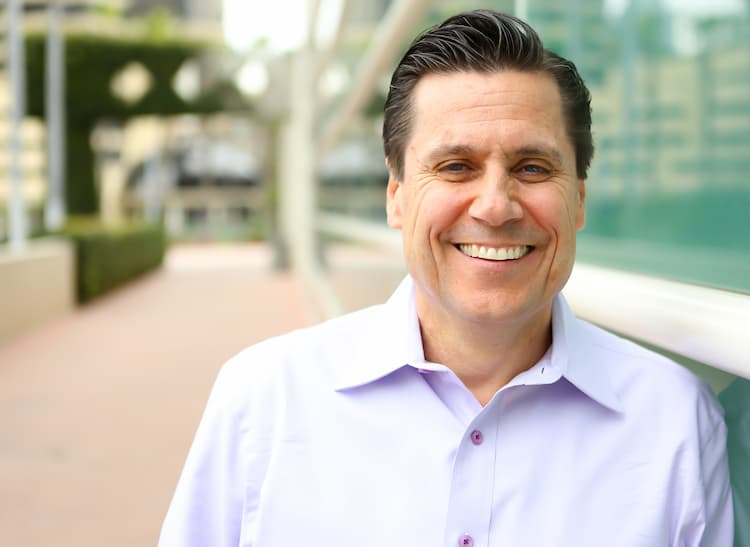Does this sound like anyone you know?
I would venture to say that 90% of all networking encounters don’t amount to anything because of what I call “intentional inaction.”
Two people go to a networking event and meet each other. After some conversation, they exchange cards because they surmise there might be a reason to stay in contact. They go back to their lives the following day, put each other’s’ card on their respective desk and nothing ever happens again between the two people
Truth be told, this is most people. This kind of behavior is what I call “Unintentional Inaction.” We take no action after the event, even though they know there might be potential to build a mutually beneficial relationship. Our lack of action is not intentional but rather, because we are lazy, afraid or don’t know what to do.
I have good news! I am going to teach you the only four action steps that matter when it comes to networking. They are:
─ Asking for the business
─ Be a connector/resource
─ Set up a Starbucks meeting
─ Intentional Inaction
A bit about each networking action summarized below.
Asking for the Business
We always need to be prepared to take advantage of any opportunity to nudge our nose under the tent. By “asking for the business” language I do not mean it has to be a situation where you point blank ask for the sale. Those situations do present themselves occasionally, and when they do we must be ready. But, more often, it is a situation where somebody makes casual reference to a problem they are experiencing that we can solve. We need to be ready to advance the ball in these moments.
It might be a comment like, “Oh, we helped a client with a similar problem. Would you like me to share what we did?”
 Maybe it is a suggestion to meet or an offer to connect to discuss the issue further after the event.
Maybe it is a suggestion to meet or an offer to connect to discuss the issue further after the event.
Here’s a great example, I was talking to one of my clients (We’ll call him Conner) and he shared with me that he was on a boat fishing in Alaska with a potential customer (We’ll call the customer Pete).
At the time of this encounter, Pete was not doing business with Conner or his firm.
While Conner and Pete were out on the river, Pete asked Conner what he did. Conner, being prepared, told Pete what he did. Pete casually responded, “Oh, I am working on a project like that right now.” There was no intention on the part of Pete to open the door for Conner. It was just a casual comment. Didn’t matter to Conner. He seized the opportunity and said, “Well, why don’t you give us a shot and see what we can do?”
According to Pete, Conner didn’t respond. It didn’t matter. Conner took the chance and who knows what may happen down the road. I suggested to Conner that he follow up with an email to Pete.
The bottom-line is we must always look out for the opportunity to push a little business. If we don’t exercise this muscle we will always be at the mercy of others, hoping they pick us.
For those who feel this approach is “too pushy” I say, “hogwash!” I never met a successful person who wasn't at least, a little bit pushy.
If we do not advocate for ourselves no one else will.
Be a Connector/Resource
It is not always about us. We love it when people reach out to us, so we must be prepared to help in kind. It does not have to be just business – think personal life as well. I have actually set up two sets of people on a blind dates who eventually got married.
Zig Ziglar said it best, “Help enough people get what they want, and you’ll have everything you want.”
Here are three tips to help you be a even better giver:
- Don't give to get. Give just because you want to give.
- Don't keep score. It is not about, “I gave you three referral. You owe me three now.”
- Go first. Give before you get. This goes a long way towards building good will.
The key is to be on the lookout for opportunities to help other people be successful.

Starbucks Meetings
This is the next key networking action I have found to be extremely effective. I built my business on this strategy. Whenever I meet someone who has a great network I always invite them to coffee at Starbucks (or Coffee Bean if you live in California) to see how we can help each other grow our businesses. I call these my pull-me-up meetings.
Here’s the language I would use. “It seems like you and I might be able to help each other grow our businesses. Would you be interested in grabbing a cup of coffee?”
When I first started out promoting my Rainmaker U. program, I tried to have 40 pull-me-up meetings a quarter. Most of them never went anywhere. But, I only needed a few to count. Remember, “You have to kiss a lot of frogs to find one prince.”
These meeting are not focused on selling the person you invited to coffee. The purpose of these meetings is to build relationships with other superstars who you can nurture into key strategic centers of influence.
Think long-term.
Intentional Inaction
This is the exact opposite of what I described above under asking for the business, connecting and scheduling coffee meetings.
In this situation, you have run through the three steps above and have determined that none of them apply so you are INTENTIONALLY deciding not to tack action.
It's okay to do nothing as long as it is a product of critical thinking.
In those situations where no further action makes sense, we might say, “I have enjoyed our conversation. Why don’t we see if we can mingle with some other people?”
Key's to excusing yourself:
– Be polite
– Honest (e.g. Don't say, “Why don't you give me your card and I will follow up with you?”)
– Smile, make eye contact and shake hands.
– Pretty easy, no.”
Summary
To sum it all up, “Intentionality” is the key. If you get intentional and apply the above action steps to your networking, watch the quality of your interactions skyrocket!
If you want to put your business development on steroids, check out our new business development program, The Box System.




































 Strategy #1 – Build a great personal brand.
Strategy #1 – Build a great personal brand.

 Ever heard that expression, “Put that in your pipe and smoke it!?” If not, it is another way of saying “Boom!”
Ever heard that expression, “Put that in your pipe and smoke it!?” If not, it is another way of saying “Boom!” Think about this: A first impression flips back and fourth 11 times in the first five seconds and your first impression is more important then the next five combined. You can see just how critical it is that you are in charge in those first few seconds when meeting someone new. How you conduct yourself will greatly influence the rest of your interaction with those you are with in that moment and quite possibly determine the fate of the relationship going forward.
Think about this: A first impression flips back and fourth 11 times in the first five seconds and your first impression is more important then the next five combined. You can see just how critical it is that you are in charge in those first few seconds when meeting someone new. How you conduct yourself will greatly influence the rest of your interaction with those you are with in that moment and quite possibly determine the fate of the relationship going forward. Step Three -Clients
Step Three -Clients 
